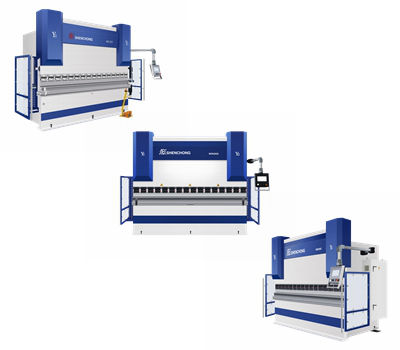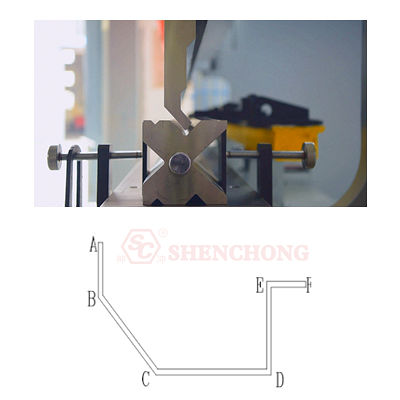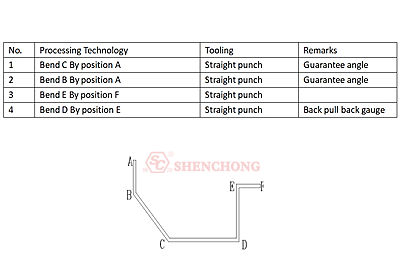
CNC Press Brake Bending is the process of turning a flat sheet metal into a solid through a pressure device and a special mold.
Due to different materials, thicknesses, lengths and widths of plates, and different shapes and angles formed, there are bending machines with different tonnage and pressure levels equipped with upper and lower dies with different heights, shapes, notch sizes and customized dies with special shapes.

Bending from inside to outside
Bending from small to large
Bending general shapes first, then bending complex shapes
Follow the principle that the previous process does not affect the subsequent process
No matter how complex the work piece is, it is composed of several processing methods separately. Therefore, it is necessary to master the operation method of each bending method and learn to integrate it, so that the bending process can be reasonably arranged for different work piece shapes in the operation.

- Locate with the nearest edge.
- Locate with wide edges.
- Try to align with non bent edges or less bent edges, so as to reduce the cumulative error.
- The workpiece to be processed by digital blanking shall be positioned without burrs and contact edges.
- Position on the edge with small deformation of the workpiece.
- Try to choose two back gauge positioning.
- Auxiliary positioning, such as magnets, can be added at both ends of the mold.
- For irregular work pieces, use specific tools for positioning.
- Large angle or U-bend does not select positioning.

Select according to the following conditions:
- Press Brake Bending width
- Plate Bending Length
- Bending Pressure required
- Processing steps
- Types and quantities of work pieces
- Special requirements for upper and lower dies
- Avoidance requirements
- Rear stopper shape
How should we control the bending size when using the press brakes?
- Avoid cumulative error: measure the developed dimension every time the bending is performed.
- Avoid positioning with bent edges.
- Avoid positioning at large angles.
- For the workpiece that must be positioned with the bent edge, the previous bending angle should be slightly less than 90 degrees.
- Determine the accuracy of measuring tools before processing.
- First inspection shall be conducted before formal processing.
- Conduct patrol inspection during processing.
- Select appropriate press brake bending equipment according to the accuracy requirements of the processed products.
- Select a good processing method and a good process layout method.
- Simplify the processing difficulty.
- Accurate positioning. Any abnormal positioning shall be detected immediately.
The above is the relevant knowledge points. Hope the above content can be helpful to you. Thanks for reading and supporting. More information will be compiled for you later. Stay tuned for updates on our website.